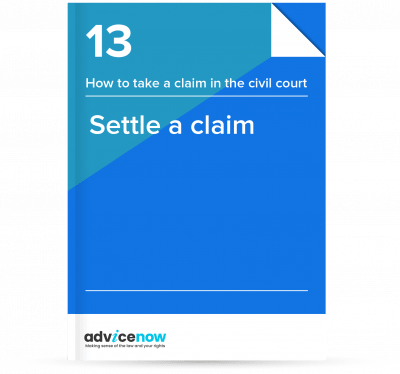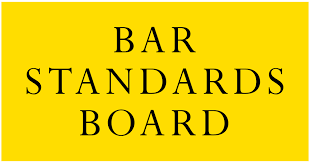A Part 36 offer to settle can be made:
- by the claimant or the defendant. So, if you are the claimant, you can consider making a Part 36 offer. You also need to be ready to deal with a Part 36 offer made by the defendant. To do either you will have to carefully and realistically value your case.
- in fast track, intermediate and multi-track claims only. You cannot use the Part 36 process in small claims. (In small claims, both sides can make offers to settle, and have “without prejudice” or “without prejudice save as to costs” communications, but the formal rules in Part 36 do not apply.)
- before or after the start of court proceedings, right up to near trial (special rules apply close to trial).
Just like informal offers made on a “without prejudice save as to costs” basis, if the attempt to settle formally using Part 36 is unsuccessful, the judge doesn’t get to know that the process has been attempted or what has been offered and rejected until after the trial. This means that they cannot be affected by the value of the Part 36 offer when giving judgment. It only becomes relevant after trial when the judge decides what to do about legal costs.
Tactical and financial advantages
Part 36 offers can be an incentive to settle because they can affect the amount of legal costs you may have to pay the other side.
The receiver of the Part 36 offer is called the 'offeree'.
The implications of the decision to make or accept an offer under the Part 36 procedure depend on:
- which party makes the offer
- whether or not the offer is accepted
- if it is accepted, whether this was within or after expiry of the relevant period (see below)
- if it is not accepted, what happens at trial.
If you turn down a Part 36 settlement sum, but don’t get a better result from the judge at the trial than what you have already been offered, you will have to pay all the other side’s legal costs from the end of what is known as the 'relevant period'. This is the period (usually 21 days from when the offer was made, it cannot be less) during which you can accept the offer. . The relevant period has to be set out in the offer
Example
Mark claims £12,600. The defendant, Joan, makes a Part 36 offer to pay Mark £11,000 on 1 February giving Mark a relevant period of 21 days to accept. Mark decides it’s not enough, and chooses to let the case go to trial.
At the trial on 10 July he wins. The court awards him £10,900. This award doesn’t beat the Part 36 offer to settle made by Joan. Mark will therefore be very likely to have to pay all Joan’s legal costs from 22 February to 10 July including the costs of the trial, plus interest. Mark needed to be awarded £11,000.01 or more to avoid being ordered to pay any of Joan’s legal costs from the end of the relevant period.
If Joan is a litigant in person, Mark will have to pay her costs of preparation, (if a proper record of this preparation have been kept), possibly up to £19 per hour. If Joan is legally represented, he will have to pay her solicitor and barrister’s costs, which could run to many thousands of pounds.
Because Mark was the claimant and won the case, Joan still has to pay his legal costs up to 22nd February (the end of the relevant period).
The tactical advantage of making a Part 36 offer is that it forces the other side to pause and think very hard about the strengths and weaknesses and value of their case.
Receiving a Part 36 offer
It’s more common to get a Part 36 offer if the defendant has a solicitor. You need a good idea of what your claim is worth, and what you are prepared to accept. Your ideas about this may change as more evidence comes your way, for example the defendant’s witness statements or expert reports.
You must take any Part 36 offer made to you very seriously. You will usually only get 21 days to accept. Most reasonable defendants will extend that time for a few days if you have a good reason, but you will need to ask – don’t just ignore the deadline!
A Part 36 offer can be accepted after the relevant period unless it has been withdrawn. However, if it is accepted after the relevant period, the person accepting the offer will have to pay the other side's legal costs from the end of the relevent period to the date they accepted the offer.
It is often very difficult to assess whether an offer is good or reasonable, and a defendant isn’t obliged to explain how they came to the amount. If you can, get legal advice to help you decide, although you will need to find someone who can help within the relevant period you have to accept, which might be difficult, particularly if you are looking for free advice. Needing a short period of extra time to consider the offer with a solicitor would be a reasonable reason to ask the other side to agree to extend the relevant period.
One big factor in many cases is that if the defendant says you are partly at fault, and the judge agrees, you are at risk of losing a proportion of the value of your claim. For example, if you are found to be one third to blame, you will lose one third of the value of your claim. This is often known as 'contributory fault' or 'contributory negligence'.
Example 1
You slipped on a wet floor at work and fell, injuring your leg. You were off work and lost earnings, and had other losses and expenses. You used the Judicial College Guidelines for the Assessment of General Damages in Personal injury Cases and valued your leg injury at £6,000 and your loss of earnings and other losses and expenses at £5,000, totalling £11,000. The defendant said despite the floor being wet (which was their fault), you were 50% at fault for running and not looking where you were going, that your leg injury was less serious, and that you were off work longer than you medically needed to be. They offered £4,800 to settle. You didn't agree, and have issued proceedings. They have now made a Part 36 offer of £7,000.
If the judge decides the defendant was at fault, and you were reasonably off work, you could get the full £11,000. However, if the defendant is successful in what they say about you at trial, you might end up, for example, with:
- as little as £5,000 if the judge decides you were 50% to blame, and that you should have been back at work sooner, or
- £7,260 if the judge accepts the amounts you have claimed, but decides you were one third to blame, or
- just under £7,000 if the judge decides you were one third to blame, but slightly reduces your losses and expenses claim (for example deciding you could have been back at work a few weeks earlier). This award fails to beat the Part 36 offer.
Any award that does not beat the £7,000 Part 36 offer will be very likely to result in you paying the other side's legal costs and interest on those costs, from the end of the relevant period. How confident are you about the amounts you have claimed? And about a judge agreeing or disagreeing about the accident being partly your fault and the level of deduction that might follow on from that?
Some claims are simpler to assess, as they don't involve any possible contributory fault, and are simply a matter of value.
Example 2
Your caravan was smashed when parked in your driveway by your neighbour's builder's digger. You have claimed £15,000. The builder's insurers have made a Part 36 offer of £14,000. Are you prepared to accept less than the value of your claim to put an end to all the risks involved in going to trial? How confident are you that you will get the full £15,000? Any award that does not beat the £14,000 Part 36 offer will result in you paying the other side's legal costs and interest from the end of the relevant period.
Making a Part 36 offer
Either side can make a Part 36 offer to encourage the other side to agree to a settlement. Again, the impact on who has to pay legal costs depends on whether or not the other side accepts and, if so, when.
Whether the claimant has made the offer, if the defendent accepts they will very likely have to pay the claimant's costs.
If the defendent does not accept the offer, it goes to trial, and the claimant is awarded an amount equal to or higher than the offer, the court will order (unless it unjust to do so):
- Interest on the sum awarded
- Interest on the costs (or an uplift of 35% to costs where the Fixed costs regime applies)
- An additional sum, calculate as a percentage of the amount awarded by the court, up to a maximum of £75,000.
Be aware!
If you are a successful claimant and a litigant in person, you will only get your costs for preparing the case at a maximum of £19 per hour or whatever earnings you lost is if that is higher if you kept proper records. However, a represented defendant may be incurring costs at £100 - £400 per hour, depending on the charging rate and location (central London or elsewhere) of their solicitor and barrister, if they have one.


